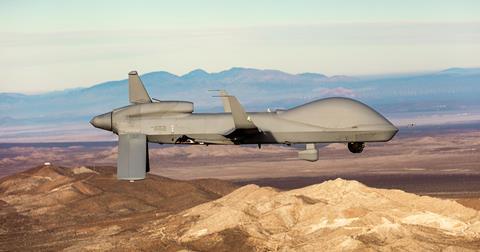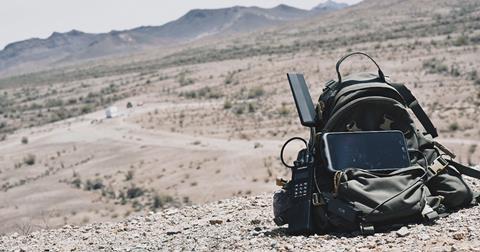General Atomics Aeronautical Systems demonstrated a soldier on the ground using a tablet computer to control an MQ-1C Gray Eagle Extended Range unmanned air vehicle (UAV).
The demonstration, which occurred on 23 April at Yuma Proving Grounds in Arizona, showed a Joint Terminal Attack Controller using a tablet to control the electro-optical/infrared camera on the aircraft, the company said on 13 May. Joint Terminal Attack Controllers are military service members trained to call in air strikes close to friendly troops.

The tablet computer, running an Android Team Awareness Kit app and using a TrellisWare TW-950 TSM Shadow Radio, allowed personnel to view the UAV’s video feed, location and sensor field of view. The tablet also allowed the controller to call for artillery support and close air support.
“The Gray Eagle Extended Range, configured for multi-domain operations, autonomously re-routed its flight path to provide the sensor data that the Joint Terminal Attack Controller requested without commands from the Gray Eagle Extended Range operator,” adds General Atomics.
By bypassing radio voice communications and taking over control of the MQ-1C directly, General Atomics says kill-chain efficiency ought to be increased and risk of collateral damaged reduced.
“In addition, the Joint Terminal Attack Controller’s ability to orient Gray Eagle Extended Range sensors on targets from an Android Team Awareness Kit tablet reduces man-in-the-loop errors and increases targeting speed,” the company says.

General Atomics funded the technology demonstration. The company has also funded similar efforts in recent years where control over its unmanned aircraft is passed from large ground control stations to personnel using ruggedised laptops. That could be useful when needing to land a UAV at a remote airfield, for instance.
The US Army, which is the leading operator of the MQ-1C, is exploring ways to pass information quickly around the battlefield. The service has pushed an “any sensor, any shooter” concept where a target picked up by any sensor would then be quickly engaged by any nearby shooter.































